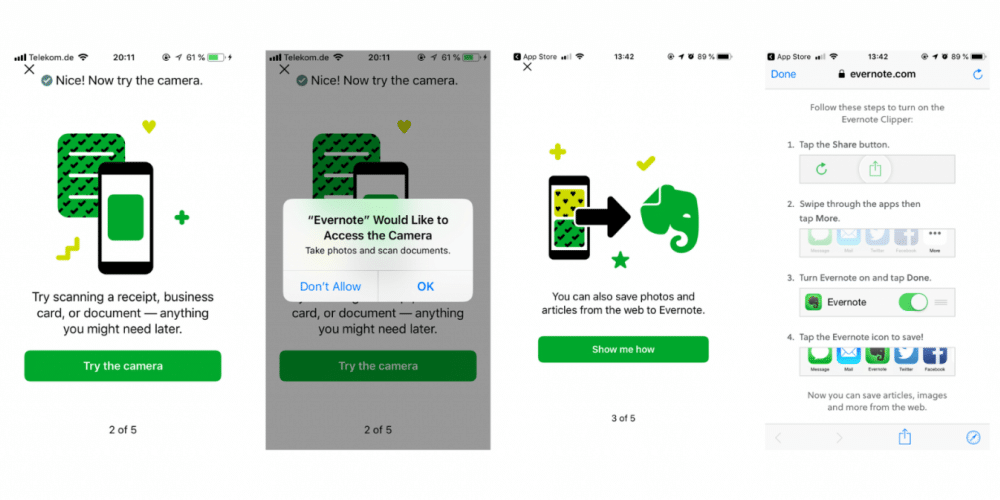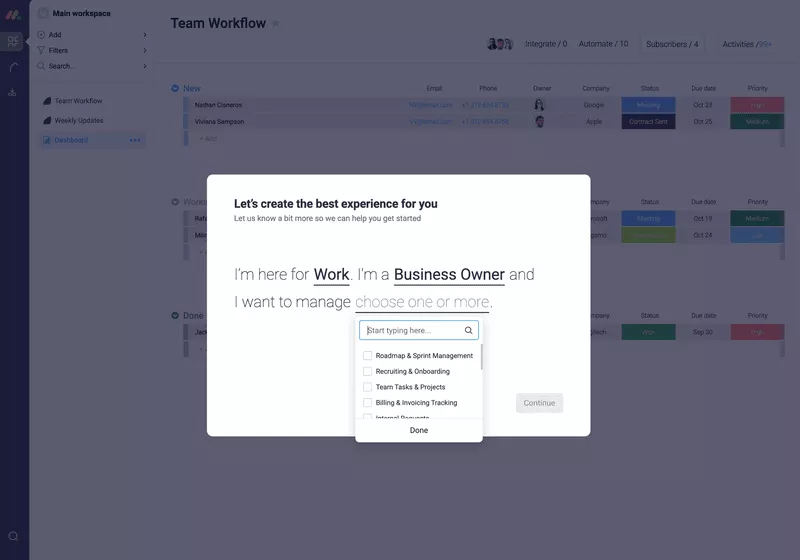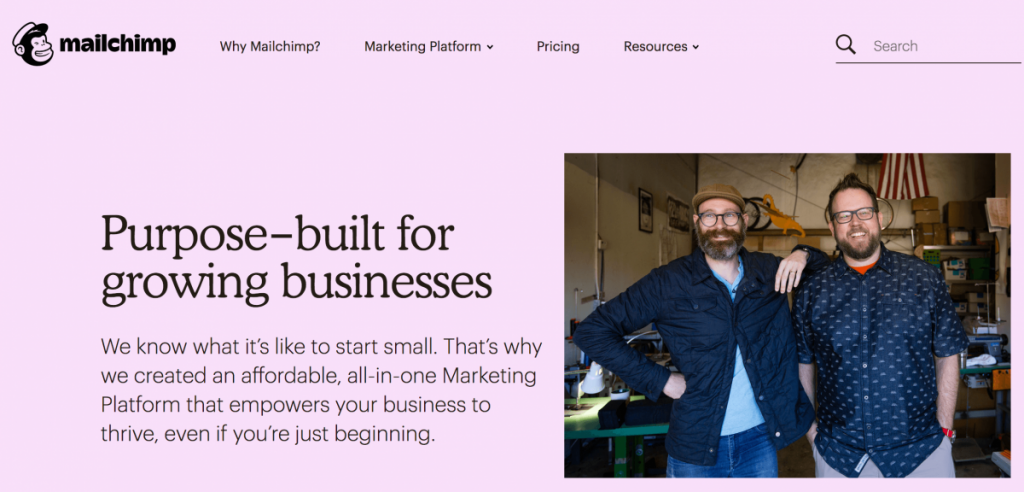What is Product Marketing? Tips, Best Practices, and Examples
If you had to define what product marketing is, what would you say about it? If you have trouble answering this question, don’t worry. Many people—including product marketers—have the same difficulties.
Although product marketing is one of the most valuable subdivisions of marketing in all industries, it is challenging to find this definition when it comes to the function of this department. That’s precisely why I’m writing this post: to bust all the myths you have about product marketing and what it entails. So let’s start by explaining what product marketing is.
What is Product Marketing?

Product marketing is the driving force behind getting products to market and ensuring that the marketing strategies resonate with audiences. This includes how the product is positioned to the understanding of the product by the users after the product is launched. In other words, it aims to demand and adapt the product.
Product marketers listen to the feedback of their targeted users throughout the product lifecycle and identify their needs. Thus, they can market their products in a way that most appeals to the wishes and needs of their users.
Why is product marketing important?
Product marketing is critical to your company’s marketing strategies because, without product marketing, your products cannot reach their maximum potential within your target audience. The main reason for this is that product marketing sheds light on the wishes and needs of your users. This allows you to understand your users better.
Of course, product marketing isn’t just important because it makes you understand your users. This type of marketing allows you to pinpoint your potential future users and meet the expectations of your product users. It also builds a bridge between your users and employees for your product offerings. In this way, it ensures that every team responsible for your company’s product fully understands its purpose.
What’s the difference between product marketing vs. product management?

Product marketing and product management are two separate fields that complement each other. Product management is building the product in a way that works best for users. However, product marketing is about positioning the product in the market and convincing users why they need it. These two areas work in harmony to create an efficient product lifecycle.
Without product marketers, product managers wouldn’t have accurate feedback on the current market. In such a case, they would be unable to launch the right products or improve their existing products to meet the demand. Likewise, without product managers, product marketers wouldn’t have a product to offer to users.
Best practices for product marketing
Here are some practices you need to pay attention to develop your product marketing successfully.
Define and understand your product’s target audience

One of the essential practices of product marketing is to have a good understanding of who your target audience is and what they need. Accurately identifying the challenges and needs of your users in your target area is the first step in laying a successful product marketing strategy on a good foundation. This allows you to create marketing efforts that appeal directly to them.
Choose the right metrics and KPIs
To measure how successful your product and product marketing process is, you need help from metrics and KPIs. At this point, one of the biggest mistakes companies make is wasting too much time tracking metrics that aren’t relevant. Tracking metrics and KPIs that won’t work for you can make you think that you’re on the wrong track or that you won’t be able to achieve your goal. This will negatively impact both your current and future marketing campaigns.
Make sure you use the right metrics and KPIs so you can continue to make improvements over time while finding measurable solutions to problems. The rest of the article will give you more detailed information about the KPIs and metrics required for product marketing.
Have an effective onboarding process
It’s important for your target audience to fully understand your product and be confident that it will meet their needs. That’s why you should have a great user onboarding process to fully appeal to the right users and not waste time with unqualified users.
The onboarding process is crucial for B2B companies because it allows you to retain existing users and gain new users over time.
Develop A Lead Generation Strategy

Convincing a prospect to make a purchase is much easier than attempting to make a sale to someone who has never heard of your product. For this reason, having potential users for an effective product marketing strategy is vital.
The most effective way to turn a casual visitor into a potential user is to create content that will convince that visitor that you are the solution to their problem rather than prompting them to make an instant purchase. By developing a good content strategy that will get one of your potential users to make a purchase, you let them make decisions based on their needs instead of trying to sell directly.
7 great product marketing examples you can learn from
We’ve talked enough about product marketing and what you need to do for successful product marketing. After all this theoretical knowledge, let’s dive into what successful product marketing looks like in practice.
Here are a few examples of successful product marketing:
#1 Zoom

Video conferencing software like Zoom has always been essential in helping people communicate and its popularity has only grown since the pandemic. In March 2020, installs of Zoom’s mobile app increased by 728%.
Of course, this sudden growth has brought various security concerns and other software issues. For this reason, Zoom had to analyze the expectations of its users very quickly, bring add-ons to its existing products and launch new products. As a result, in 2021, they launched Zoom Apps, which allows for more productive workflows through third-party integrations. They have also launched Zoom Events, an all-in-one hub for virtual event management. They succeeded by accurately analyzing their users’ expectations and successfully marketing their solutions.
#2 Evernote

Evernote is a top-rated note-taking application around the world. The main reason for this popularity is that they have a successful product marketing strategy based on onboarding.
Evernote has made the onboarding process for selling products as easy and intuitive as possible. They also prioritized increasing their user base by offering unique features to their existing customers that they can use effectively. They have succeeded with this marketing strategy that pushes the customer to purchase and maintain their subscription.
#3 Monday.com

Another example of success with a product marketing strategy based on the onboarding process is Monday.com. Monday.com’s onboarding process is slightly different from Evernote, based on micro-surveys.
Micro-surveys are a quick and easy way to collect data about users. Micro-surveys do not have complex questions. The purpose of these contextual surveys, which usually have answers such as yes-no, and a rating scale, is to get user feedback. Thanks to micro-surveys, it becomes easier to learn what your users do, their role in the company, and what they are on this platform for. This collected information allows you to create a more personalized product usage process. Monday.com is an excellent example of collecting and effectively using user data with micro-surveys.
#4 WeTransfer

Download pages are an often underappreciated part of SaaS products. But there are various ways to evaluate this part. WeTransfer has a clever product marketing strategy: leveraging download pages. They have also devised an innovative product marketing strategy, using the download pages as an opportunity to promote their paid plan.
WeTransfer is an application that users mainly use to transfer files too large for email. However, many users who benefit from this application do not know much about the Pro version of WeTransfer. At WeTransfer, they put the loading pages to good use with a quiz that does not bore their users and introduces Pro features.
#5 MailChimp

MailChimp is an email marketing tool that has recently expanded to become an “all-in-one marketing suite.” This tool is one of the platforms that determines the purpose of its users to use their products and carries out a successful product marketing campaign. Marketing teams have selected that users mostly use MailChimp to grow their business. That is why many products of this tool focus on promoting the growth of companies.
In short, MailChimp listened to its users’ voices, offered solutions parallel to their needs, and followed a marketing strategy accordingly.
#6 Webflow

Webflow is a no-code website builder, and although it entered the market much later than other strong competitors, it gained a successful momentum. So how did Webflow achieve this? With product marketing strategies based on clearly identifying target users.
Webflow realized that its competitors focused more on small businesses or companies and positioned the product market to fill the gap. More specifically, Webflow has targeted freelance web designers and built its platform to become the best choice for that audience. He also created blog posts and e-books on topics that might interest this audience. This has helped transform Webflow into a community of designers.
#7 Coda

Coda has a great product marketing strategy built around positioning. The language they use is aimed at their target audience and is relatively simple. It is therefore easy to understand what the tool does. In addition, it empathizes with the problems of its users with its humorous language and offers a new solution proposal.
How to measure product marketing success?
There are many elements to consider to determine the success of your product marketing. KPIs and metrics are the most effective way to measure how successful all these elements are. Here are a few KPIs and metrics you can use in product marketing:
#1 Conversion rate
Conversion rate refers to the ratio of users who respond to the call-to-action you set. Conversion doesn’t necessarily mean making a purchase. However, each conversion brings users one step closer to purchasing. The conversion rate is calculated as follows:
Conversion rate: Total number of users who convert / Total number of users
How many conversions you have is directly related to how successful your marketing efforts are. The main reason is that this metric allows you to determine the proportion of users who complete an entire customer journey throughout the product lifecycle. Based on your conversion rate, you can determine the compatibility of your marketing strategies with your target audience and optimize your campaigns efficiently.
#2 Product usage
Product usage shows you how and when your users use your product. It can help you make better decisions for product marketing and optimize your marketing campaigns. Therefore, product usage data helps you better understand your consumer and act accordingly.
#3 Win rate
Win rate is a measure of your sales success over a certain period. In other words, it is a metric that allows you to understand how many of your sales opportunities you have successfully managed. Here is the formula for calculating the win rate:
Win rate = (total amount of sales / amount of sales opportunities) x 100
Win rate is a fundamental metric for product marketing, as it directly relates to the sales opportunities you successfully manage. This metric will shed light on what you do well in your sales and marketing methods and what you need to improve. It also helps you predict the success of your future sales based on your current sales and marketing campaigns.
#4 Net promoter score
The net promoter score (NPS for short) is a metric that helps you measure your users’ satisfaction with your product. This metric measures your users’ potential to recommend your product based on their satisfaction with the product.
To measure your NPS score, you must first send your users a survey where they can rate your product on a scale of 1 to 10. Those who score between 1 and 6 in the survey you sent are called detractors. This group is dissatisfied with your service, and the rate of leading someone else is almost zero. Data 7-8 are called passives. This group is primarily satisfied with your product. However, they usually do not take action to suggest to someone else. 9-10 givers are promoters. This group is delighted with your product, and they will likely talk about your product.
The NPS score is found by subtracting the percentage of promoters from the percentage of detractors and can take a value between -100 and +100. This value is essential because it helps you determine what your users think about your product. It also allows you to determine how many of your users have the potential to bring you leads.
#5 Feature engagement

Feature engagement is a metric that allows you to track how often and how your users interact with your product’s features. With this metric, you can determine which features add value to your product and which features lag behind. Thus, you can create campaigns to market features of your product that are less interacted with than others. If you don’t track your feature engagement, it becomes complicated to determine what strategies you need to implement to increase engagement.
#6 Retention rate
Retention rate is a metric that helps you determine how many of your users continue to use your product. Retaining existing users is less costly than attracting new ones, so this ratio is crucial.
To calculate your retention, you need three data: the existing users you had at the beginning of your base period (B), the total number of users you had at the end of your base period (E), and the users who just started using your product during this period (N).
The formula for the retention rate is as follows:
Retention rate = [(E – N) / B] x 100
Conclusion
Long story short, product marketing involves creating, measuring, and perfecting strategies to market a product. You work at the center and in partnership with your company’s marketing, sales, and product teams while creating your product’s marketing strategies.
While undertaking all these tasks, understanding your users’ expectations and presenting them with what they want can be a complicated process. Make sure to take inspiration from past successful strategies and leverage the metrics you need to make this process as easy as possible.
FAQs
SaaS product marketing is the process of ensuring that the right users are aware of and demanding the product after it is released to the market. SaaS companies often have subscription-based pricing. Unlike in other industries, in SaaS product marketing, it is necessary to focus not only on customer acquisition but also on customer retention.
There are no specific types of product marketing. However, there are different practices that you can use depending on the expectations of the users and the different features of your product.



